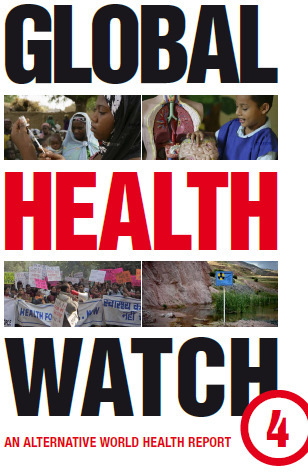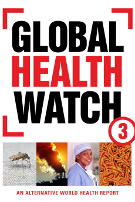6.11 Elimination of schistosomiasis
Secretariat note
In response to a request by a Member State, the Secretariat has prepared a report which reviews the current global epidemiological situation for schistosomiasis, the feasibility of elimination, and the measures that would need to be taken to bring this about. The Board is invited to consider the report and a draft resolution.
- Document EB130/20
- Financial and admin implications EB130/20 Add 1
Watchers' notes of EB discussion
Elimination of schistosomiasis (EB Document 130/20)
The discussion was mainly animated by endemic countries (China, Thailand, Sierra Leone, Somalia), US and UK.
Morocco was the first in taking the floor presenting the successful results they achieved in the elimination of schistosomiasis.
While Somalia drew the attention on the importance of control activities and drug provision, Thailand broadened the picture recalling the socio-economic roots of this neglected tropical disease. The Thai delegate explained that people suffering from schistosomiasis are fishermen, irrigation workers, children playing and women washing clothes in contaminated water, and stated that ”they share a common ground: they are poor”.
Also UK stressed the need for integrated strategies such as water and sanitation improvements for optimizing results and resources.
On a technical side, US stated that it is premature to talk about elimination of the disease in some countries and suggested to use the word “control” in the draft resolution.
Among civil society organizations, the only one who took the floor was the “International Federation of Pharmaceutical Manufacturers and Associations (IFPMA)” which is actively engaged through donation programmes. The speaker reminded the generous donation of Praziquantel by Merk Sharp & Dohme and emphasized the need for this drug to become available in big quantity. He also announced that next month more drug donations will be made.
After Dr Nakatani from the Secretariat had summarized the main points of the discussion, the resolution was adopted with few amendments, in particular the words “water, sanitation, and hygiene interventions” were introduced in paragraph 3.
Despite this small change, the draft resolution is quite disappointing. Indeed, it is focused almost entirely on scaling up preventive mass praziquantel treatment without recognizing that the elimination of such a disease calls for a more broadly based strategy than continuing periodic mass treatments
PHM Comment
This is a disappointing report and draft resolution. It is focused almost entirely on scaling up preventive mass praziquantel treatment as a strategy for controlling schistosomiasis and the need to mobilise more funds to ensure supply and delivery of praziquantel.
While mass praziquantel treatment is effective in controlling the burden of morbidity from schistosomiasis, elimination of the disease calls for a more broadly based strategy than continuing periodic mass treatments. While the cost and shortage of praziquantel supplies are critical issues there are other issues which should be canvassed in this report.
The provision of domestic piped clean water and effective domestic sanitation must remain high priorities, not just because of schistosomiasis but because of a range of other diseases and simple amenity. The disease focused approach should not obscure the need for basic water supply and sanitation. See Esprey et al 1991.
The delivery of clinical services and the planning, implementation and follow up of preventive treatment depend on functioning primary health care systems. So does community mobilisation around the environmental initiatives needed to control parasites and vectors. It needs to be recognised that functioning health systems based on comprehensive primary health care provide the necessary platforms for all of the vertical programs currently being promoted: AIDS, TB, malaria and schistosomiasis. Vertical delivery structures for these different diseases make it more difficult, not less, to build effective comprehensive primary health care. See Gryseels et al, 2006.
Further it is the case that large scale water engineering projects can have significant effects on exposure to schistosomiasis. Strong intersectoral collaboration is needed to ensure that such projects are planned with full consideration of the implications for soil transmitted infections. The health sector in affected countries may need ongoing WHO support in intersectoral action in this field.
The proposed resolution does not set out a comprehensive short, medium and long term plan for the elimination of schistosomiasis. Rather it advocates for funds mobilisation to pay for preventive treatment which is a partial and short to medium term strategy. If the Secretariat is to invest in reporting regularly to the EB and WHA on progress with respect to schistosomiasis control, the reports should be required to be more comprehensive and to scan the medium and longer term strategies as well as short term control.
The Secretariat should be commissioned to provide a more comprehensive short medium and long term strategy which includes but goes beyond resource mobilisation for mass preventive treatment.




